Rare Care Internship Helps Student Bloom
In the spring of 2018, Maya Kahn-Abrams made her annual trip to the Umtanum Creek Recreation Site in eastern Washington, an area she has loved since she moved to Washington. On this trip, she noticed that some of the native rose bushes were being impacted by a fungal infection. This observation affected Maya profoundly. She had a background in environmental microbiology and regenerative agriculture, but the infected roses made her realize she needed to be doing more for the Washington native species she had come to love. The trip left her wanting to do something — but she didn’t know what that something might be. It wasn’t until several months later, when Maya came across an announcement for a Rare Care internship through the University of Washington Botanic Gardens, that a career path began to take shape.
“Working with Rare Care has given me a sense of purpose in my life,” Maya states with conviction. She had been hoping to unite various interests in her undergraduate career in the pursuit of a common goal. This goal came into focus when she saw the possibilities of working with rare plants and conducting research to inform their management and restoration.
In 2019, the Rare Care program was taking on interns as part of a project with the National Park Service to establish long-term monitoring plots for alpine plants. Maya had a science background and various outdoor experiences in Washington and in the tropics, but she lacked field ecology experience and a sense of how to apply her skills to rare plants. Viewing the internship as a golden opportunity, Maya applied and eagerly accepted a position. Before beginning her internship, Maya began gaining experience in native plants through an independent study course focused on native plant taxonomy and ecology in her last quarter. Her new ties to the UW Botanical Gardens also gave her the opportunity to take part in a restoration project with Rare Care at Turnbull Wildlife Refuge with Spalding’s catchfly (Silene spaldingii) as part of the course.

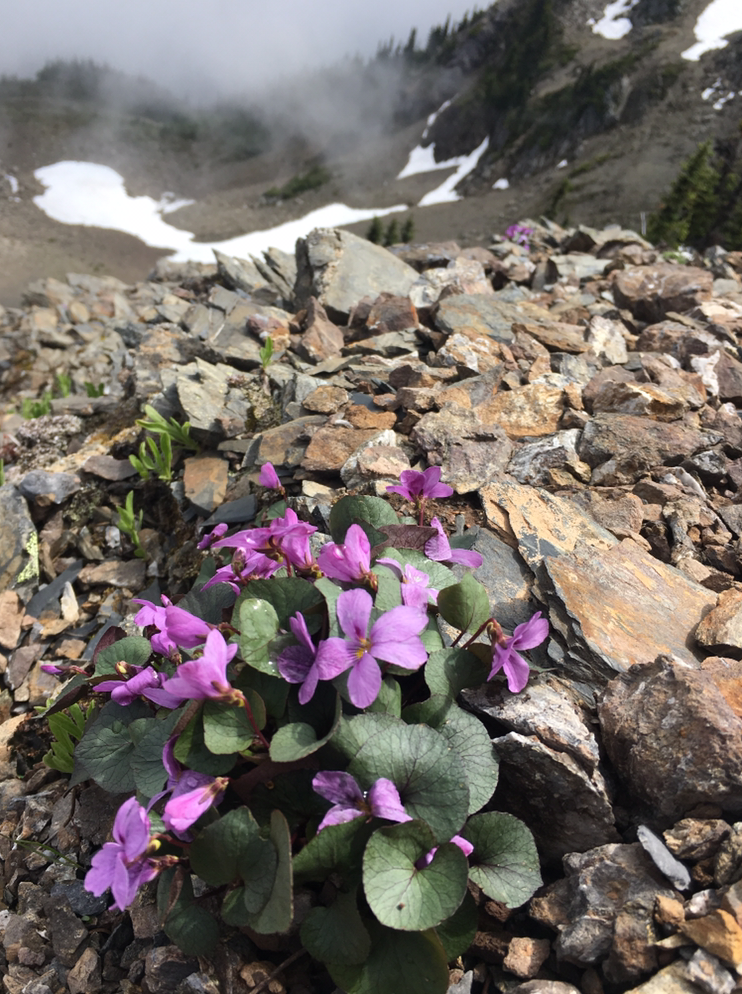
During the summer of her internship, Maya gained new skills and got to know some incredible alpine plants. She worked with fellow intern Callie Zender and under the tutelage of Wendy Gibble, Rare Care Program Manager. Wendy recalls that, “Right from the start, Maya demonstrated an incredible passion for learning about plants and how they interact with surrounding species and the environment.” Maya quickly absorbed new skills — preparing for field work, techniques for monitoring plants, and interpreting the data — as well as a familiarity with the challenges facing rare plants and rare plant restoration efforts. These skills were the missing pieces that enabled her to link her previous experiences to her desire to help native plants.
Even in a brief Zoom call, Maya’s passion for rare plants shines through. Wendy shared that “Early career interns bring fresh ideas and infectious enthusiasm to the Rare Care Program, that can lead to new discoveries and innovative ideas that expand our tool kit for plant conservation.” In Maya’s case, she carried her ideas and enthusiasm on into her next endeavors.
Following the internship, Maya continued to work with Rare Care, shifting between volunteer and staff according to availability and need. As she contemplated graduate school options, she heard an inspiring talk given by Professor Jonathan Bakker (University of Washington) to the Washington Native Plant Society. She later found him on the list of advisors for a master’s project working with Rare Care on sagebrush-steppe restoration – a perfect match for her interests. This tie-in allows Maya to continue her relationship to the UW Botanic Gardens and Rare Care, the group that helped her find her purpose.
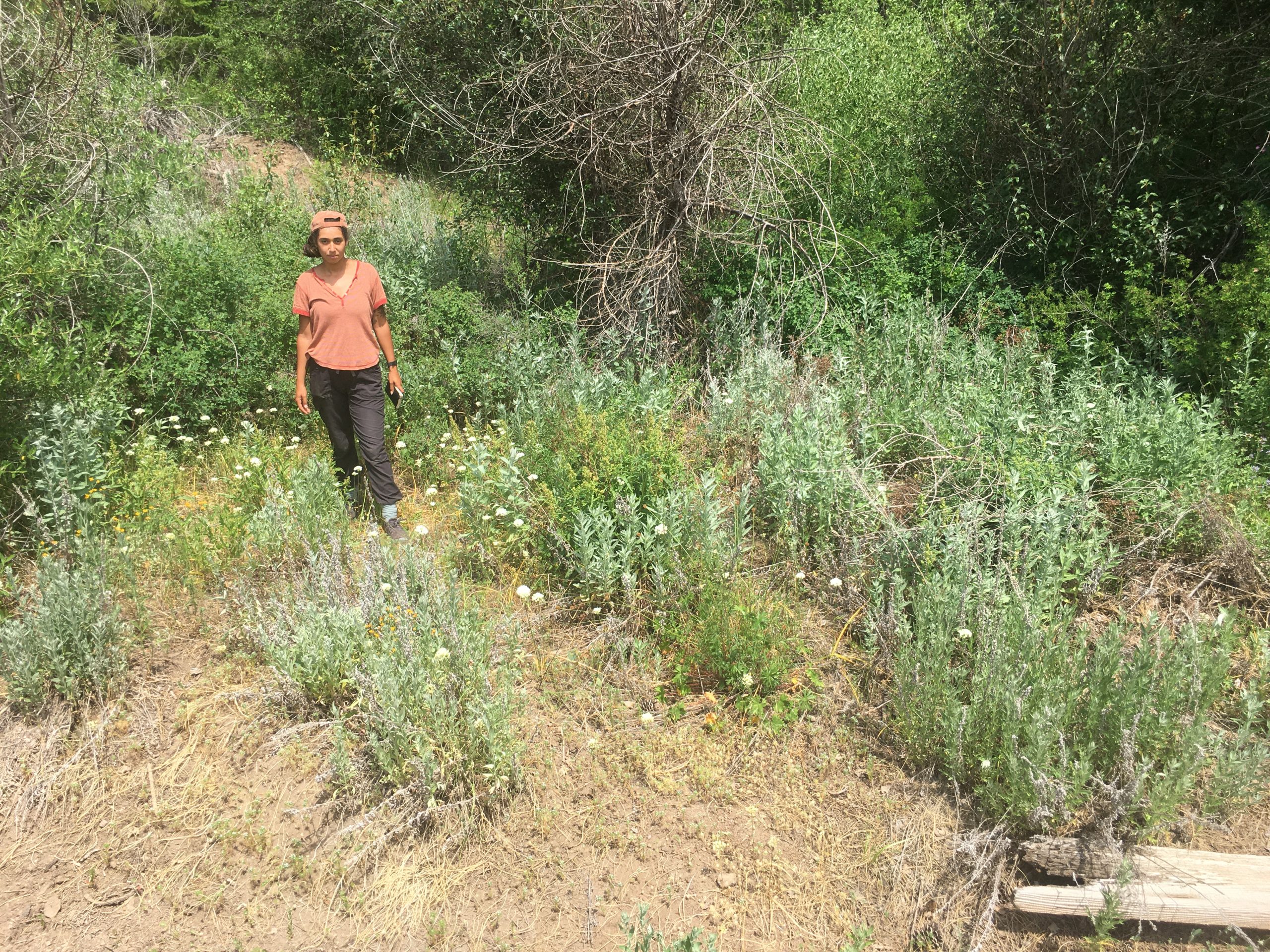
For her master’s thesis, Maya is studying Umtanum Desert buckwheat (Eriogonum codium), a Washington state endemic found only on Hanford Reach National Monument. Rare Care is working with researchers and land management partners to simultaneously learn more about the plant’s life history and keep it from the brink of extinction through outplantings. The Umtanum Desert buckwheat, like several other buckwheat species, seems to be found only on a specific soil type. Understanding this relationship may help the survival of outplanted seedlings. Maya is examining if this rare buckwheat is indeed a soil endemic, and what soil characteristics allow it to flourish there.
-
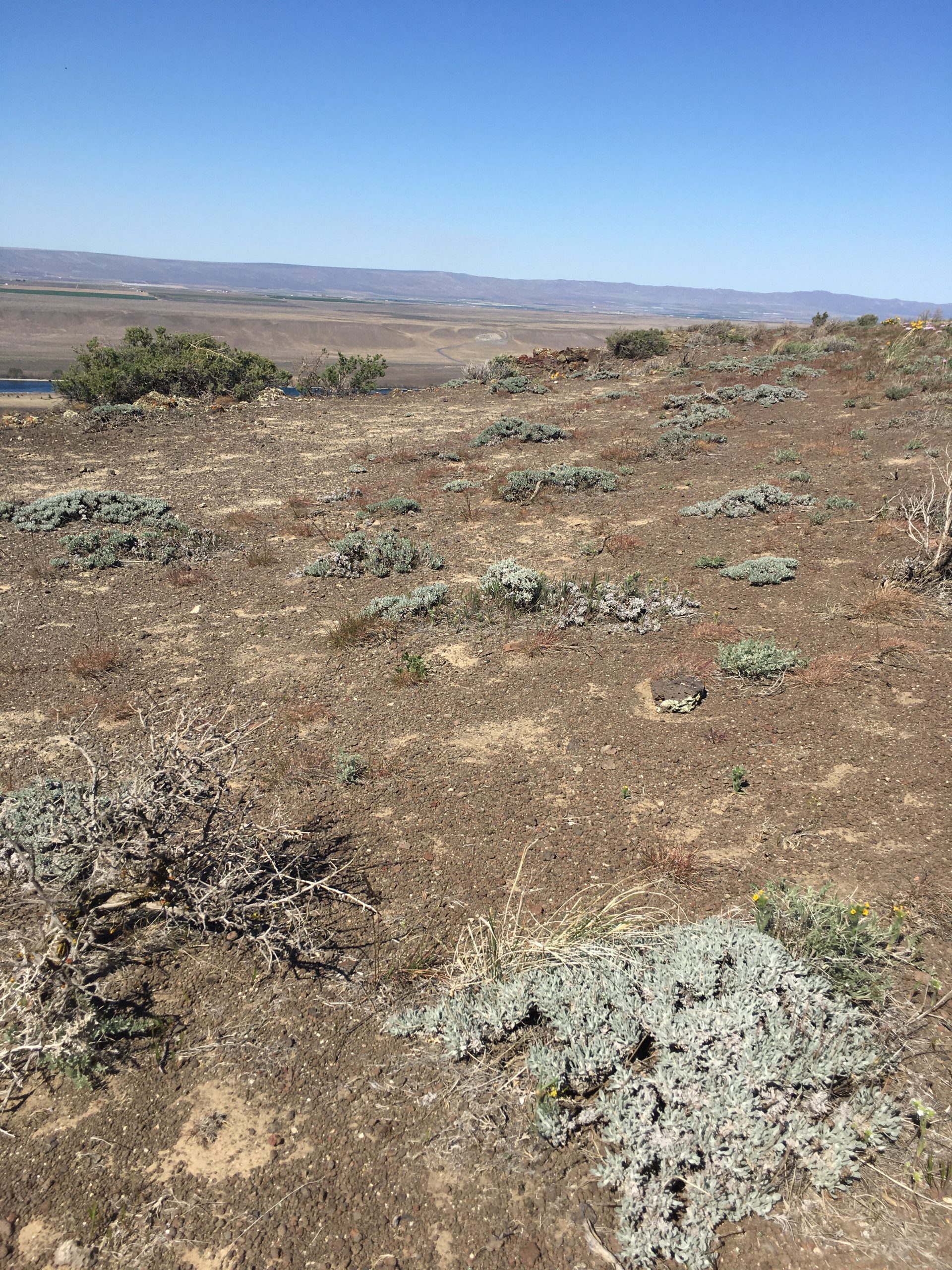
Some of the plants comprising Umtanum Desert wild buckwheat's (Eriogonum codium) single population. Understanding the difference in soil of this 1.9 sq mile in Benton Co, Washington and the attempted enhancement sites is part of Maya's master's thesis. Photo credit: Maya Kahn-Abrams -
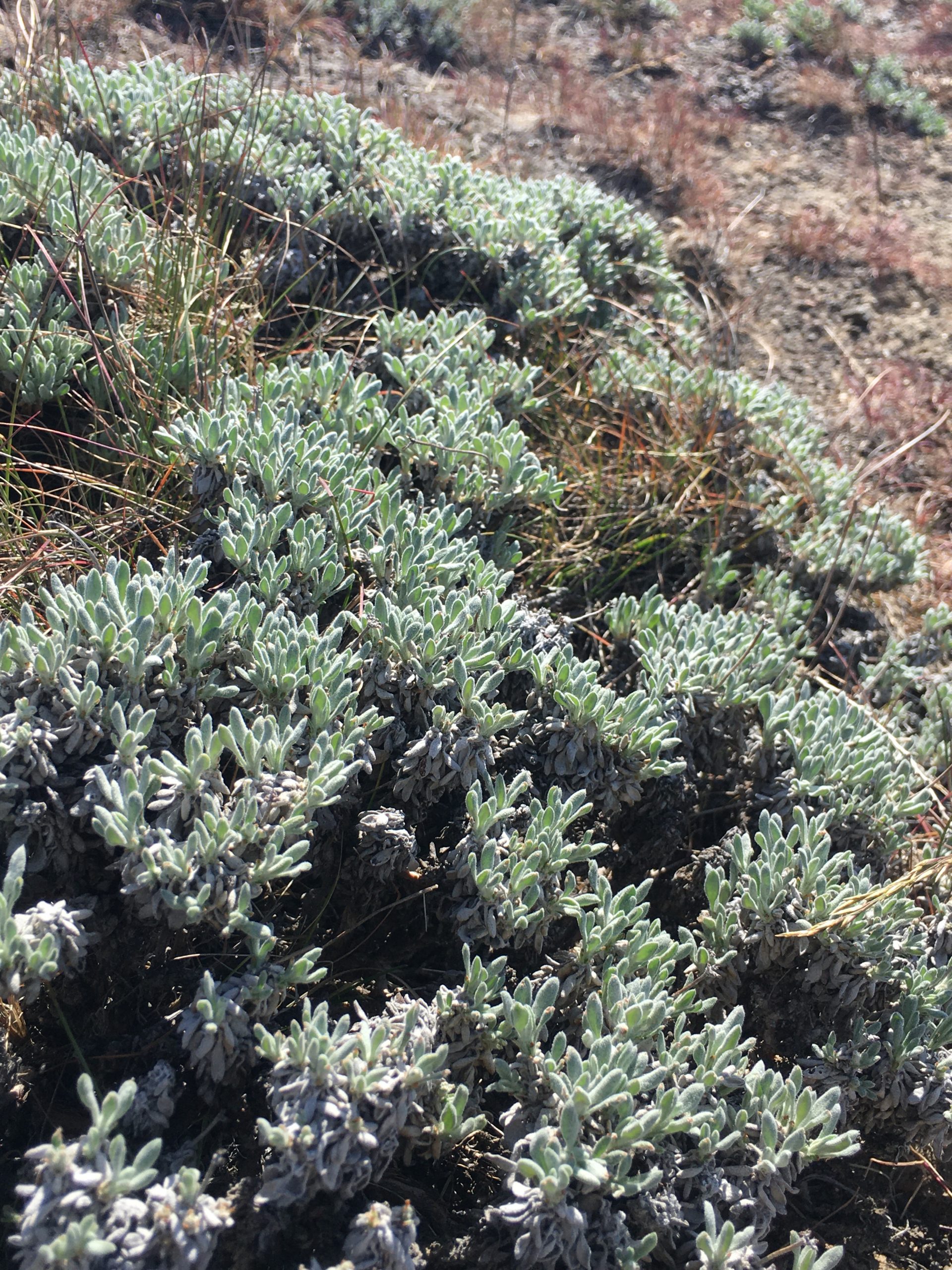
Some of the plants comprising Umtanum Desert wild buckwheat's (Eriogonum codium) single population. Understanding the difference in soil of this 1.9 sq mile in Benton Co, Washington and the attempted enhancement sites is part of Maya's master's thesis. Photo credit: Maya Kahn-Abrams -

Hoover’s Desert Parsley (Lomatium tuberosum) in Yakima Co., WA. Photo credit: Maya Kahn-Abrams 2021
Maya’s work comparing the natural site to failed outplanting sites and proposed outplanting sites ties her undergraduate background in microbiology and biogeochemical cycling to her more recently developed field skills and interests in restoration and soil science. She has found meaning in her career path because she took a chance on something new — applying to an internship to work with rare plants when she didn’t even know that jobs were available in this field.
“Providing learning and training opportunities for the next generation of botanists is really important to us here at UW Botanic Gardens,” notes Wendy Gibble. With success stories like Maya’s, it is easy to see why the Gardens’ program values them so highly.
-

Maya visits the Umtanum Creek Recreation Site, Kittitas Co, WA, annually, and the area nurtured her love for Washington native plants before she joined Rare Care. Photo Credit Maya Kahn-Abrams 2019 -
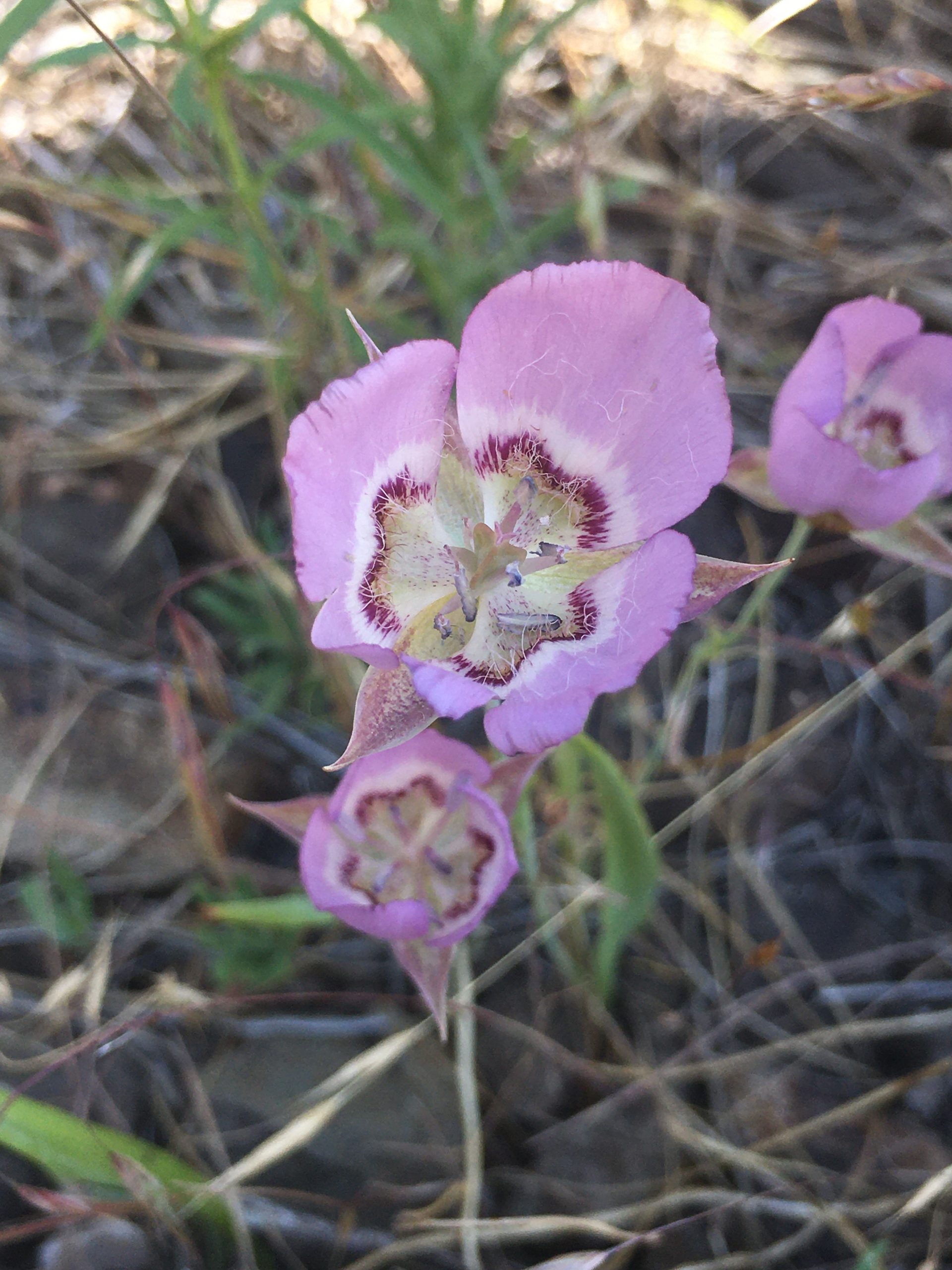
Monitoring Long Haired Star Tulip (Calochortus longebarbatus var. longebarbatus) in Klickatat Co, WA. Photo Credit: Kevin Price 2021 -

Umtanum Desert wild buckwheat (Eriogonum codium) seedlings used in greenhouse experiment looking at the effects of herbicide drift for use in invasive grass control Photo credit: Maya Kahn-Abrams